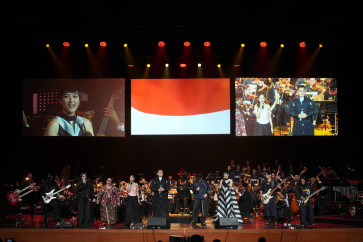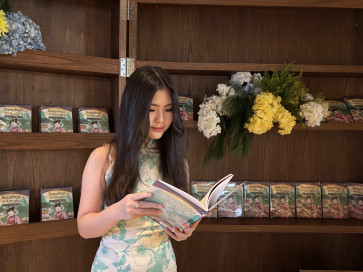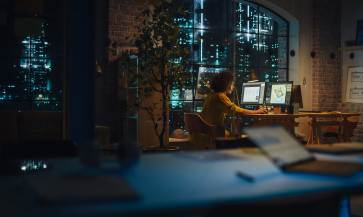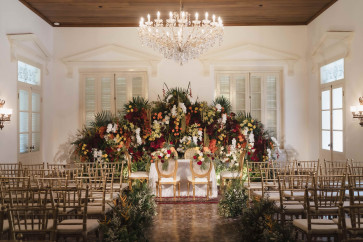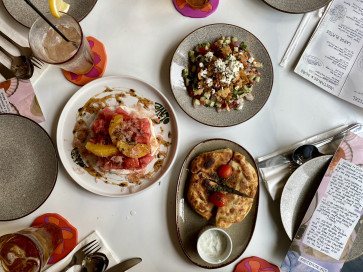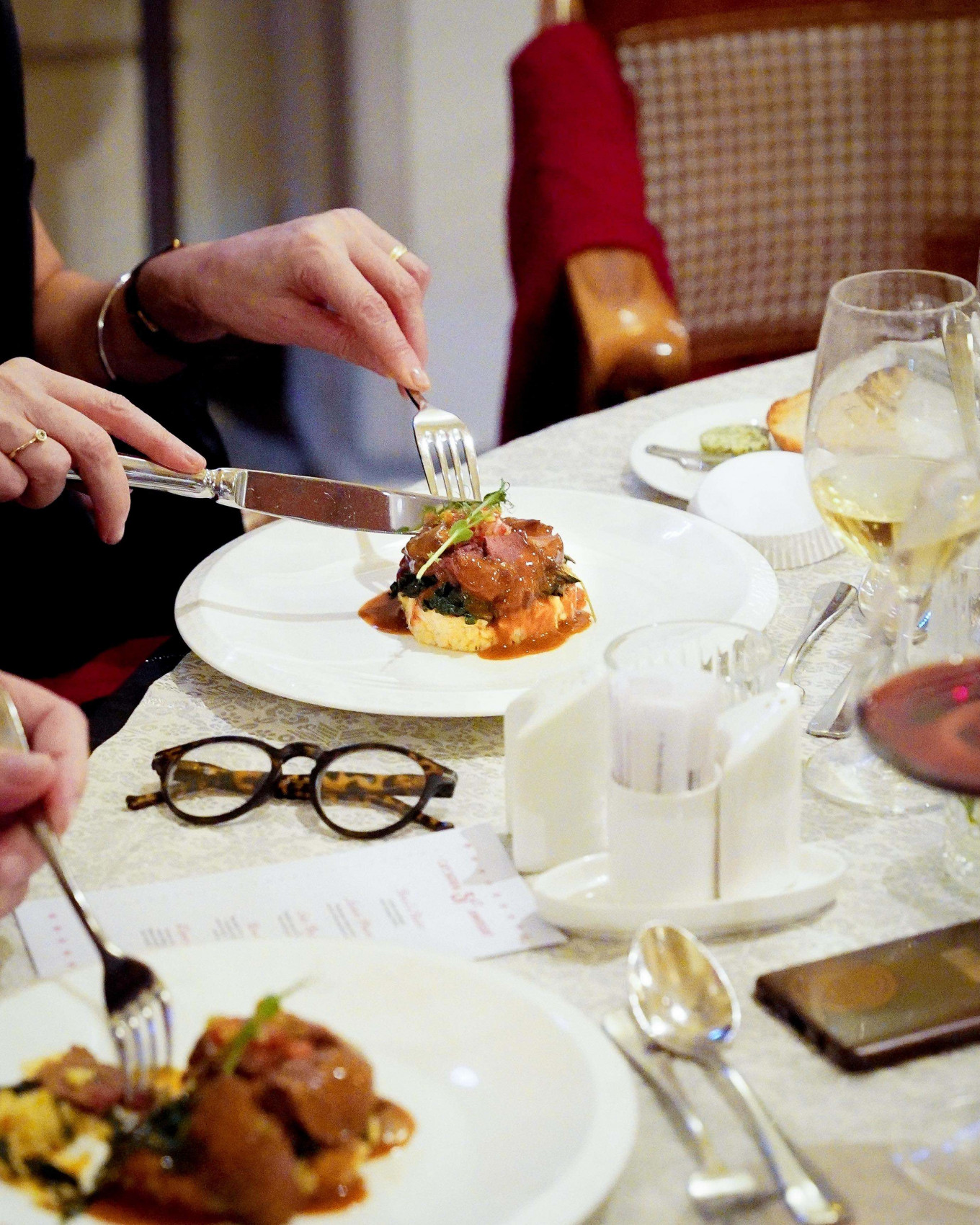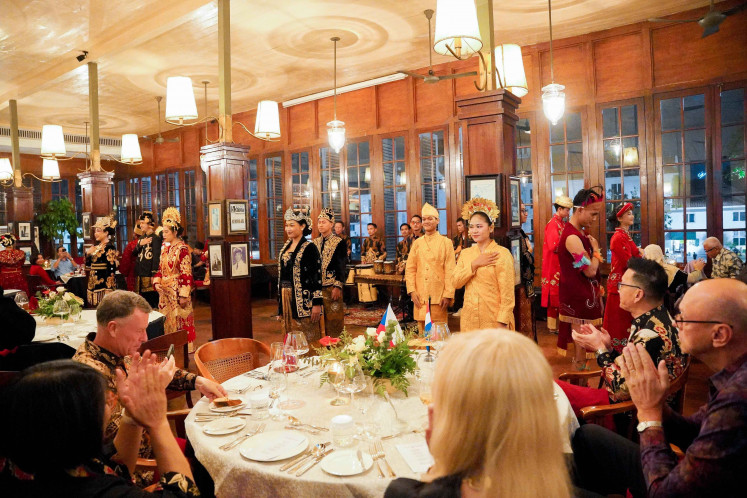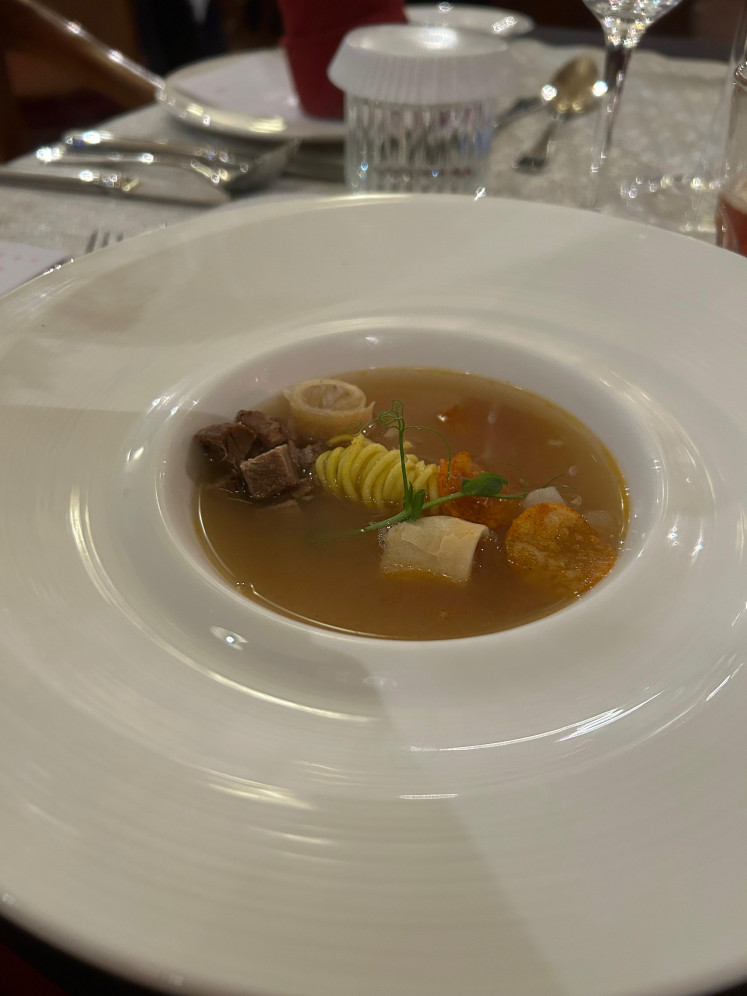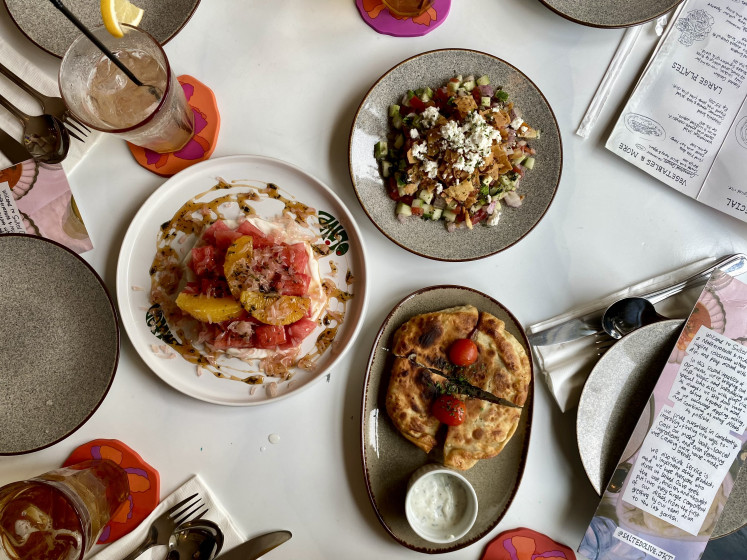A diner cuts into Cafe Batavia’s sophisticated spin on ‘rendang’ (spiced stewed beef): sous vide beef tenderloin on a creamy bed of rice and savory sauce.
Few Jakartans will be unfamiliar with Cafe Batavia, the iconic go-to spot to take visiting family and friends for a drink or a meal after exploring the historic Kota Tua (Old Town) area in West Jakarta.
Although the decades-old café has worked hard to maintain its nostalgic appeal in the centuries-old building it calls home, its menu tells a different story. While the decor remains frozen in time, its food has evolved to keep up with modern culinary trends.
Now 31, the café has cooked up a range of new dishes for 2025.
“Over the years, our menu has changed. We have given a modern twist to a number of our dishes. We want to preserve [our] heritage, but we also want to show that we can keep up with the times,” said Jessica Pandy, a member of Cafe Batavia’s board of directors.
I was lucky enough to preview this new menu during a grand dinner event celebrating the café’s 31st anniversary last month.
Contemporary take

Thank you!
For signing up to our newsletter.
Please check your email for your newsletter subscription.
The evening began with a warm welcome from staff dressed in traditional attire from across the country, which created a festive and authentic atmosphere.
Restaurant staff in traditional dress representing Indonesia's diverse culture welcome guests at Cafe Batavia's 31st anniversary dinner on December 7, 2024. (Courtesy of Cafe Batavia)
“Cafe Batavia is very much intertwined with Indonesian culture, and I think we have a responsibility in this popular tourist area to represent the best of us, our culture, through its cuisine,” Jessica explained.
The dinner opened with grilled sourdough bread served with kemangi (lemon basil) compound butter. Though simple, the dish carried a distinctly local aroma and flavor, a familiar taste elevated with a touch of umami.
The first course was a creative take on asinan (pickled vegetables), accompanied by a poached prawn. The dish retained its traditional essence while the elegant presentation elevated it to a fine dining experience. The sweet-and-sour pickling liquid, prepared as foam, paired beautifully with the succulent prawn, creating a refreshing and energizing starter.
For the main courses, Cafe Batavia offered two reimagined classics: Soto Bogor (Bogor-style noodle soup) and Rendang (spiced beef stewed in coconut milk).
Soto Bogor is served with fine dining flair to celebrate the 31st anniversary of Cafe Batavia in Taman Sari, West Jakarta. (JP)
The Soto Bogor was prepared traditionally but presented innovatively: Served in bite-sized portions, the soup was ladled tableside with precision, adding a theatrical element to the dining experience that combined authenticity with sophistication.
The highlight, however, was the sous vide tenderloin Rendang, the café’s most daring reinvention.
Served atop rice with cooked cassava leaves and Manado’s sambal dabu-dabu, the dish felt like a modern steak dinner but tasted like a comforting nasi Padang. The tender beef, perfectly cooked, carried the familiar flavors of rendang, while the sambal delivered satisfying heat.
Classic staples
The meal concluded with Cafe Batavia’s signature klappertaart, a baked custard pudding that showcases the country’s Indonesian-Dutch culinary heritage.
“We will always have our classic items, the Indonesian and Indo-Dutch cuisine we are known for,” Jessica said.
A contemporary take on the classic dessert ‘klappertart’ showcases Cafe Batavia’s Indonesian-Dutch culinary fare. (JP)
Accompanied by coconut curd, raisins, a crispy almond tuile and roasted vanilla ice cream, the dessert stayed true to its classic roots while adding a touch of indulgence. It also made for a familiar sweet ending to an evening of new culinary experiences at Cafe Batavia.
Of course, if familiarity is what you’re after, Cafe Batavia strives to look the way it has for over 200 years.
“We want to preserve, or at the very least, make it as similar as how it was back in 1800,” Jessica said.
“A lot of the elements, such as the lighting and cowhide that adorn the bar, we try to find approximations of the exact originals. We want to keep the legacy alive,” she said.
And if you’re still craving Cafe Batavia’s beloved bitterballen (Dutch croquette) and poffertjes (Dutch pancake), these will always be around.
Aqraa Sagir is a writer on the Creative Desk at The Jakarta Post. He is chronically online in the hope it will be a useful asset.




